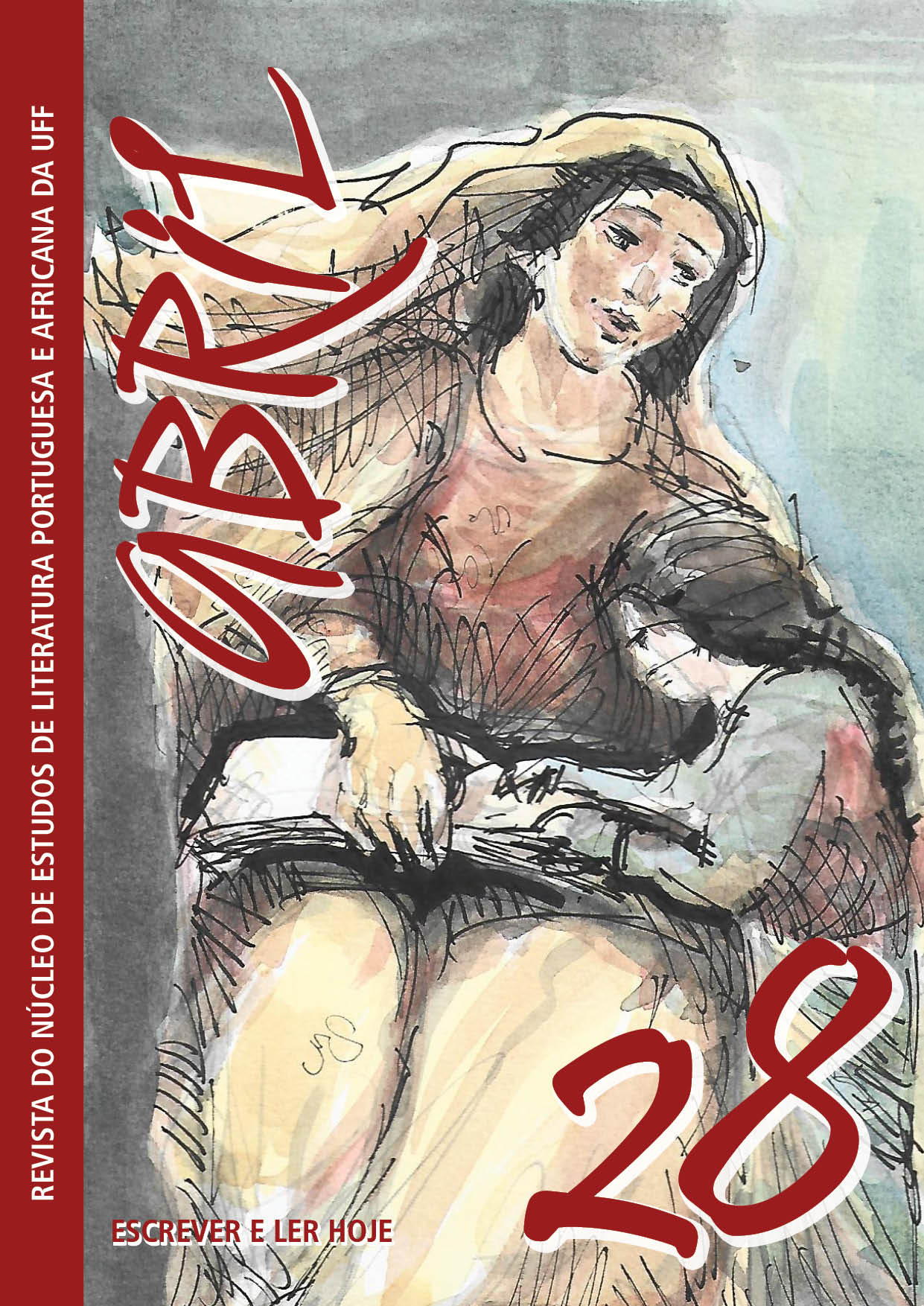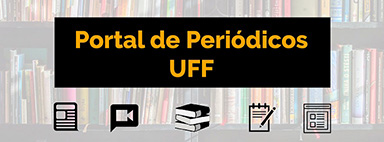Um beijo dado mais tarde e a (des)aprendizagem da leitura
DOI:
https://doi.org/10.22409/abriluff.v14i28.50971Palavras-chave:
Maria Gabriela Llansol, Um beijo dado mais tarde, leitura, percepçãoResumo
A libertação da língua de sua habitual condição de “impostura” é um núcleo semântico disseminado por toda a obra de Maria Gabriela Llansol, mas é n’Um beijo dado mais tarde (1990) que esse núcleo encontra um espaço de “dramatização” ficcional, erigindo-se tanto em construção textual sui generis quanto em experiência dos seres que por esse texto transitam. Persigo aqui o argumento de que a imagem da leitura é nessa obra o nó semântico donde emana a troca duma língua herdada por uma voz adquirida e a principal via por que as figuras reivindicam uma percepção desautomatizada e amplificada dos textos e do(s) mundo(s). Formulações teóricas de Roland Barthes, Hans Robert Jauss e Wolfgang Iser iluminam minha hipótese interpretativa.
Downloads
Referências
BARRENTO, João. A origem de ler (Posfácio). In: LLANSOL, Maria Gabriela. Um beijo dado mais tarde. Porto: Assírio e Alvim, 2016.
BARTHES, Roland. Aula [1978]. São Paulo: Cultrix, 1989.
Maria Gabriela Llansol e a rapariga que temia a impostura da língua. In: Actas do colóquio Lusophofe History, Literature and Culture Conference, Universidade de Santa Barbara, Califórnia, 13 e 14 de Abril de 2000.
GUSMÃO, Manuel. Figuras da metamorfose na obra de Maria Gabriela Llansol. In: GUSMÃO, Manuel. O fulgor é móvel. Em torno da obra de Maria Gabriela Llansol. Lisboa: Roma Editora, 2003. p. 13-23
GUSMÃO, Manuel. Partilha generosa do que é misterioso. In: Jornal de Letras, Artes e Ideias, 1991.
ISER, Wolfgang. A interação do texto com o leitor. In. LIMA, Luiz Costa (Org.). A literatura e o leitor. Rio de Janeiro: Paz e Terra, 1979.
JAUSS, Hans Robert. A história da literatura como provocação à teoria literária. São Paulo: Editora Ática, 1994.
LLANSOL, Maria Gabriela. “Para que o romance não morra”. In: LLANSOL, Maria Gabriela. Lisboaleipzig 1: O encontro inesperado do diverso. Lisboa: Edições Rolim, 1994.
LLANSOL, Maria Gabriela. Na margem da língua, fora da literatura. In: LLANSOL, Maria Gabriela. Entrevistas. Belo Horizonte: Autêntica, 2011, p. 7-17.
LLANSOL, Maria Gabriela. Um beijo dado mais tarde. Porto: Assírio e Alvim, 2016.
LLANSOL, Maria Gabriela. Um falcão no punho. Lisboa: Relógio D’Água, 1998.
LOPES, Silvina Rodrigues. Ficção: Des-possessão. In: LOPES, Silvina Rodrigues. Teoria da des-possessão (Sobre textos de Maria Gabriela Llansol). Lisboa: Averno, 2013, 79-89.
MOURÃO, José Augusto. Figuras da metamorfose na obra de Maria Gabriela Llansol. In: MOURÃO, José Augusto. O fulgor é móvel. Em torno da obra de Maria Gabriela Llansol. Lisboa: Roma Editora, 2003, p. 13-23.
SANTOS, Maria Etelvina. Eu leio assim este Texto. In: SANTOS, Maria Etelvina. In: Como uma pedra-pássaro que voa. Llansol e o improvável da leitura. Lisboa: Mariposa Azual, 2008.
SEIXO, Maria Alzira. Para uma tipologia do discurso ficcional. (Pensando a obra de Maria Gabriela Llansol). In: SEIXO, Maria Alzira. A palavra do romance. Ensaios de genologia e análise. Lisboa: Livros Horizonte, 1986 p. 28-33.
Downloads
Publicado
Edição
Seção
Licença
Copyright (c) 2022 Abril – NEPA / UFF

Este trabalho está licenciado sob uma licença Creative Commons Attribution-NonCommercial 4.0 International License.
Autorizo a Revista Aabril - NEPA/UFF a publicar o artigo que ora submeto, de minha autoria/responsabilidade, caso seja aceito para publicação online. Declaro, ainda, que esta contribuição é original, que não está sendo submetida a outro editor para publicação, e assino a presente declaração como expressão da verdade.
Os trabalhos publicados no espaço virtual da Revista Abril serão automaticamente cedidos, ficando os seus direitos autorais reservados à Revista Abril. Sua reprodução, total ou parcial, é condicionada à citação dos autores e dos dados da publicação.

A Revista Abril utiliza uma Licença Creative Commons - Atribuição-NãoComercial 4.0 Internacional (CC BY-NC 4.0).









